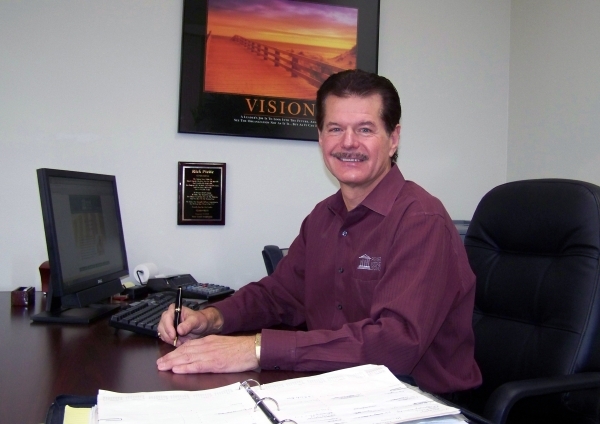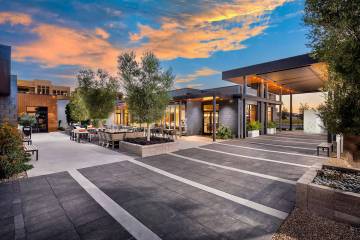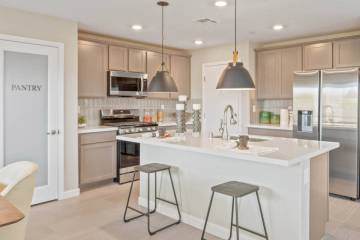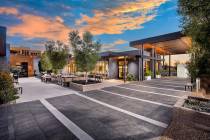Know what fees you are paying for your home loan
Today, with new financial regulations in place for consumers obtaining mortgage loans, borrowers may not be familiar with the real meaning of a "no fee loan." Knowing what to look for can save a buyer literally thousands of dollars in unnecessary costs.
"Since the time of the savings and loan crisis of the 1980s — when commercial banks and mortgage banks stepped to the forefront of mortgage lending — the industry operated pretty much at a status quo," said Rick Piette, owner of Premier Mortgage Lending. "There was little variance between interest rates among lenders, and it was common practice for a borrower to pay a 1 percent loan origination fee — along with other assorted loan fees — in order to obtain a mortgage."
"But in January 2014, everything changed for mortgage lenders and their customers," Piette said. "The Dodd-Frank Act, created in response to the 2007 collapse of the U.S. financial system, established new limits on how much a lender can charge you in upfront points and fees to obtain a "qualified mortgage."
But here's the catch, and it's one that many consumers don't realize: There are fees that must be disclosed to borrowers by all mortgage companies (visible fees) — and fees that lenders do not have to disclose (invisible fees).
Where does the difference lie? Specifically, in the type of mortgage company you use.
In short, a mortgage broker must disclose all fees charged to the borrower, period. Banks and mortgage bankers don't.
To see how this works, it helps to understand a few key industry terms:
1.) Disclosed fees. These fees are clearly stated and visible on your loan estimate and your final closing documents. They indicate the monies being paid to your mortgage broker, bank, or mortgage banker for making your loan.
2.) Undisclosed fees. Fees that provide income for your mortgage lender but are not clearly spelled out. They are invisible, hidden from the borrower's view and not required by law to be disclosed.
3.) 3 percent cap rule. Set by Dodd-Frank to establish the maximum amount a lender can charge you for disclosed fees (3 percent of your loan amount.).
4.) Par rate. The current base interest rate that is set daily by the secondary mortgage market. These entities establish a par rate for the day which they publish to all lenders nationwide.
5.) Service release premium, or SRP. This is a fee paid by the loan servicer to the loan originating company. This is an undisclosed fee that generates additional income for the lender from the borrower. It is not included in the 3 percent cap rule, it does not have to be identified for the borrower — and a lender is free to raise or lower this at their discretion.
6.) Loan servicer. The entity that handles the collection of your monthly mortgage payment. Loan servicers purchase mortgage loans from lenders and are compensated through the excess interest they collect monthly.
7.) Yield spread premium. Another undisclosed fee that works like this:
a. Loan servicers pay lenders for the opportunity to service your loan and derive their income from the excess interest you pay, noted above.
b. If a lender increases the amount of the SRP in the par rate — thereby raising the interest rate — the difference is referred to as the yield spread premium.
c. As the higher interest rate will increase their earnings, the loan servicer will pay the lender a "premium" for the right to buy and service that loan.
d. Result: The lender makes more money on your mortgage loan by charging you a higher interest rate and sharing that increased income with the loan servicer. This does not have to be disclosed to the borrower.
"While it may seem odd, the new financial regulations are applied differently to these three lender categories," Piette said. "In fact, a mortgage broker is subject to another rule as well: They cannot earn income from more than once source. That source is commonly the lender they broker the loan to — not the borrower, and not the loan servicer. The mortgage broker is paid by the lender at the close of escrow, and all their fees are disclosed to the borrower in writing. There are no surprises.
"On the other hand, banks and mortgage bankers have no such 'single-source earning' restriction. That means not only can they charge borrowers the 3 percent maximum in disclosed fees; they can also earn undisclosed income on your loan through a higher interest rate.
"And this is where it gets complicated for consumers: When a bank or mortgage banker normally offers what they call a "no fee" loan (showing $0 for loan origination or other 'junk fees') — it typically comes with a higher interest rate. What they're doing is charging the borrower for the yield spread premium. So the mortgage banker earns back those fees unbeknownst to the borrower because it's undisclosed."
"So how do borrowers protect themselves? Simple: The next time you get a loan estimate from a lender — ask them for an interest rate that has "no fees." Then get a no-fee quote from another lender, and compare the interest rates. This way, there's no confusion about what you're comparing — it's all about that rate."
For call 702-485-6600. Or, apply online at www.premiermortgagelending.com. For more details on mortgage loan, visit www.KnowBeforeYouOweNevada.com
Premier Mortgage Lending, NMLS No. 393282, is at 701 N Green Valley Parkway, No. 125 in Henderson.






















